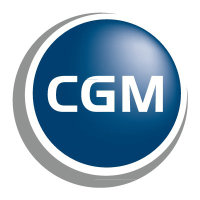
Magazine Luiza SA
BOVESPA:MGLU3


| US |

|
Johnson & Johnson
NYSE:JNJ
|
Pharmaceuticals
|
| US |

|
Berkshire Hathaway Inc
NYSE:BRK.A
|
Financial Services
|
| US |

|
Bank of America Corp
NYSE:BAC
|
Banking
|
| US |

|
Mastercard Inc
NYSE:MA
|
Technology
|
| US |

|
UnitedHealth Group Inc
NYSE:UNH
|
Health Care
|
| US |

|
Exxon Mobil Corp
NYSE:XOM
|
Energy
|
| US |

|
Pfizer Inc
NYSE:PFE
|
Pharmaceuticals
|
| US |

|
Palantir Technologies Inc
NYSE:PLTR
|
Technology
|
| US |

|
Nike Inc
NYSE:NKE
|
Textiles, Apparel & Luxury Goods
|
| US |

|
Visa Inc
NYSE:V
|
Technology
|
| CN |

|
Alibaba Group Holding Ltd
NYSE:BABA
|
Retail
|
| US |

|
JPMorgan Chase & Co
NYSE:JPM
|
Banking
|
| US |

|
Coca-Cola Co
NYSE:KO
|
Beverages
|
| US |

|
Walmart Inc
NYSE:WMT
|
Retail
|
| US |

|
Verizon Communications Inc
NYSE:VZ
|
Telecommunication
|
| US |

|
Chevron Corp
NYSE:CVX
|
Energy
|
Utilize notes to systematically review your investment decisions. By reflecting on past outcomes, you can discern effective strategies and identify those that underperformed. This continuous feedback loop enables you to adapt and refine your approach, optimizing for future success.
Each note serves as a learning point, offering insights into your decision-making processes. Over time, you'll accumulate a personalized database of knowledge, enhancing your ability to make informed decisions quickly and effectively.
With a comprehensive record of your investment history at your fingertips, you can compare current opportunities against past experiences. This not only bolsters your confidence but also ensures that each decision is grounded in a well-documented rationale.
Do you really want to delete this note?
This action cannot be undone.

| 52 Week Range |
5.81
11.8
|
| Price Target |
|
We'll email you a reminder when the closing price reaches BRL.
Choose the stock you wish to monitor with a price alert.

|
Johnson & Johnson
NYSE:JNJ
|
US |

|
Berkshire Hathaway Inc
NYSE:BRK.A
|
US |

|
Bank of America Corp
NYSE:BAC
|
US |

|
Mastercard Inc
NYSE:MA
|
US |

|
UnitedHealth Group Inc
NYSE:UNH
|
US |

|
Exxon Mobil Corp
NYSE:XOM
|
US |

|
Pfizer Inc
NYSE:PFE
|
US |

|
Palantir Technologies Inc
NYSE:PLTR
|
US |

|
Nike Inc
NYSE:NKE
|
US |

|
Visa Inc
NYSE:V
|
US |

|
Alibaba Group Holding Ltd
NYSE:BABA
|
CN |

|
JPMorgan Chase & Co
NYSE:JPM
|
US |

|
Coca-Cola Co
NYSE:KO
|
US |

|
Walmart Inc
NYSE:WMT
|
US |

|
Verizon Communications Inc
NYSE:VZ
|
US |

|
Chevron Corp
NYSE:CVX
|
US |
This alert will be permanently deleted.
Magazine Luiza SA
Magazine Luiza SA, commonly known as Magalu, has become a cornerstone of Brazilian retail by seamlessly blending tradition with innovation. Founded in 1957 in Franca, São Paulo, what began as a modest family-owned store has transformed into one of Brazil’s biggest retail giants. Initially focused on brick-and-mortar stores, Magalu steadily expanded its footprint across the country over the decades. But the true hallmark of its success has been the aggressive pivot towards digital transformation. Recognizing the e-commerce wave, the company embraced a robust online strategy that now supports its sprawling network of physical retail locations. This fusion of digital and physical sales channels allows Magalu to not only cater to tech-savvy urban customers but also reach the more traditional shoppers in smaller towns, effectively harmonizing its operations in both worlds.
Magalu's business model stands out for leveraging an omnichannel approach, maximizing sales through both online and offline platforms while ensuring inventory and logistics synergy. The company has developed a sophisticated infrastructure that includes an extensive logistics network, ensuring efficient delivery and customer satisfaction, which is crucial in a country as vast as Brazil. Furthermore, by consistently acquiring tech startups, Magalu has fortified its e-commerce capabilities and integrated additional services such as digital payments and financial services for its growing customer base. Through these concerted efforts, Magazine Luiza generates revenue by selling an extensive array of products, from electronics and household appliances to apparel and beauty products. By continually adapting to consumer trends and investing in technology, Magalu has maintained a competitive edge, crafting a retail experience attuned to the demands of modern consumers while honoring its rich, storied heritage.

Magazine Luiza SA, commonly known as Magalu, has become a cornerstone of Brazilian retail by seamlessly blending tradition with innovation. Founded in 1957 in Franca, São Paulo, what began as a modest family-owned store has transformed into one of Brazil’s biggest retail giants. Initially focused on brick-and-mortar stores, Magalu steadily expanded its footprint across the country over the decades. But the true hallmark of its success has been the aggressive pivot towards digital transformation. Recognizing the e-commerce wave, the company embraced a robust online strategy that now supports its sprawling network of physical retail locations. This fusion of digital and physical sales channels allows Magalu to not only cater to tech-savvy urban customers but also reach the more traditional shoppers in smaller towns, effectively harmonizing its operations in both worlds.
Magalu's business model stands out for leveraging an omnichannel approach, maximizing sales through both online and offline platforms while ensuring inventory and logistics synergy. The company has developed a sophisticated infrastructure that includes an extensive logistics network, ensuring efficient delivery and customer satisfaction, which is crucial in a country as vast as Brazil. Furthermore, by consistently acquiring tech startups, Magalu has fortified its e-commerce capabilities and integrated additional services such as digital payments and financial services for its growing customer base. Through these concerted efforts, Magazine Luiza generates revenue by selling an extensive array of products, from electronics and household appliances to apparel and beauty products. By continually adapting to consumer trends and investing in technology, Magalu has maintained a competitive edge, crafting a retail experience attuned to the demands of modern consumers while honoring its rich, storied heritage.
Stable Top Line: Net revenue grew just 1% year-on-year, as Magalu prioritized profitability over aggressive growth in a high-interest rate environment.
Strong Profitability: Achieved BRL 700 million in EBITDA and an EBITDA margin of 7.9%, maintaining solid margins even with muted sales growth.
Cash Generation: Operating cash flow reached BRL 535 million for the quarter, with BRL 2.5 billion generated over the last 12 months.
Subsidiary Performance: KaBuM!, Netshoes, and Época delivered strong results, with Netshoes posting record sales and income.
AI Commerce Launch: Launched a fully automated AI commerce experience via Lu’s WhatsApp, showing strong early engagement and conversion metrics.
Marketplace Focus: Marketplace (3P) GMV was flat, as Magalu avoided unprofitable sales and focused on positive margin contribution.
Logistics Expansion: Magalog’s logistics business added major external clients and continued to grow its third-party services.
Financial Services Growth: Luizacred and Magalu Pay posted record profits, while a new financial branch is expected to provide significant tax and funding benefits in 2025.

































